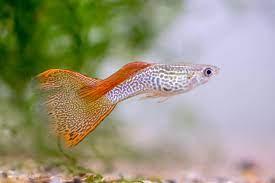The Importance of Substrate for the Overall Aesthetics of Your Aquarium

When setting up an aquarium, many hobbyists focus on the visual appeal of the tank. While decorations, lighting, and fish selection all play a role in the overall aesthetics of your aquarium, substrate is an essential component that should not be overlooked. In addition to its importance for aesthetics, substrate is also necessary for the health and well-being of your aquatic pets. In this article, we will discuss why substrate is necessary for aquarium, for the overall aesthetics and health of your aquarium.
What is Substrate?
Substrate is a material that is placed on the bottom of an aquarium. It can be made from a variety of materials, including gravel, sand, and soil. Substrate serves several important functions in an aquarium, including providing a natural habitat for fish and beneficial bacteria, promoting plant growth, and stabilizing pH levels.
Aesthetics of Substrate
In addition to its practical functions, substrate can also play a significant role in the overall aesthetics of your aquarium. The texture, color, and size of the substrate can all have a significant impact on the visual appeal of your tank.
Texture
The texture of the substrate can help to create a natural and visually appealing environment for your aquarium. Fine sand or gravel can mimic the natural environment of many fish species, while larger stones or rocks can create a more dramatic and eye-catching display. The texture of the substrate can also impact the behavior of your fish. For example, some fish species may prefer to dig or burrow in fine sand, while others may prefer a rougher texture to hide in.
Color
The color of the substrate can also have a significant impact on the overall aesthetics of your aquarium. Substrate comes in a wide range of colors, from natural earth tones to bright and vibrant hues. The color of the substrate can be used to create a specific aesthetic, such as a natural riverbed or a colorful coral reef.
Size
The size of the substrate can also impact the visual appeal of your aquarium. Smaller substrates, such as fine sand or small gravel, can create a more uniform and seamless appearance. Larger substrates, such as rocks or driftwood, can create a more dramatic and visually striking display.
Practical Functions of Substrate
In addition to its aesthetic benefits, substrate also serves several important practical functions in an aquarium. For example, substrate provides a natural habitat for beneficial bacteria, which are essential for maintaining a healthy and stable ecosystem. Substrate also promotes plant growth by providing a stable base for roots to anchor and grow, as well as providing essential nutrients for plants to thrive. In addition, substrate helps to stabilize pH levels in the aquarium by serving as a buffer for changes in water chemistry.
Choosing the Right Substrate
When choosing the right substrate for your aquarium, it's important to consider both the practical functions and the visual appeal of the substrate. Consider the needs of your fish and plants, as well as your personal aesthetic preferences. Choose a substrate that is easy to maintain and clean, and avoid substrates that can promote algae growth or negatively impact water quality.
Conclusion
In conclusion, the importance of substrate for the overall aesthetics and health of your aquarium cannot be overstated. Substrate is necessary for providing a natural habitat for fish and beneficial bacteria, promoting plant growth, and stabilizing pH levels. Additionally, substrate plays a significant role in the visual appeal of your aquarium, with texture, color, and size all impacting the overall aesthetic of the tank. When choosing the right substrate for your aquarium, consider both the practical and aesthetic aspects of the substrate to create a visually appealing and healthy environment for your aquatic pets.
Advertise on APSense
This advertising space is available.
Post Your Ad Here
Post Your Ad Here
Comments